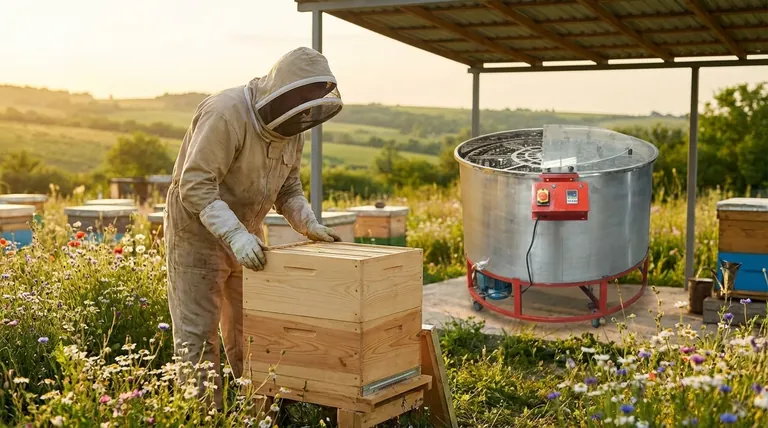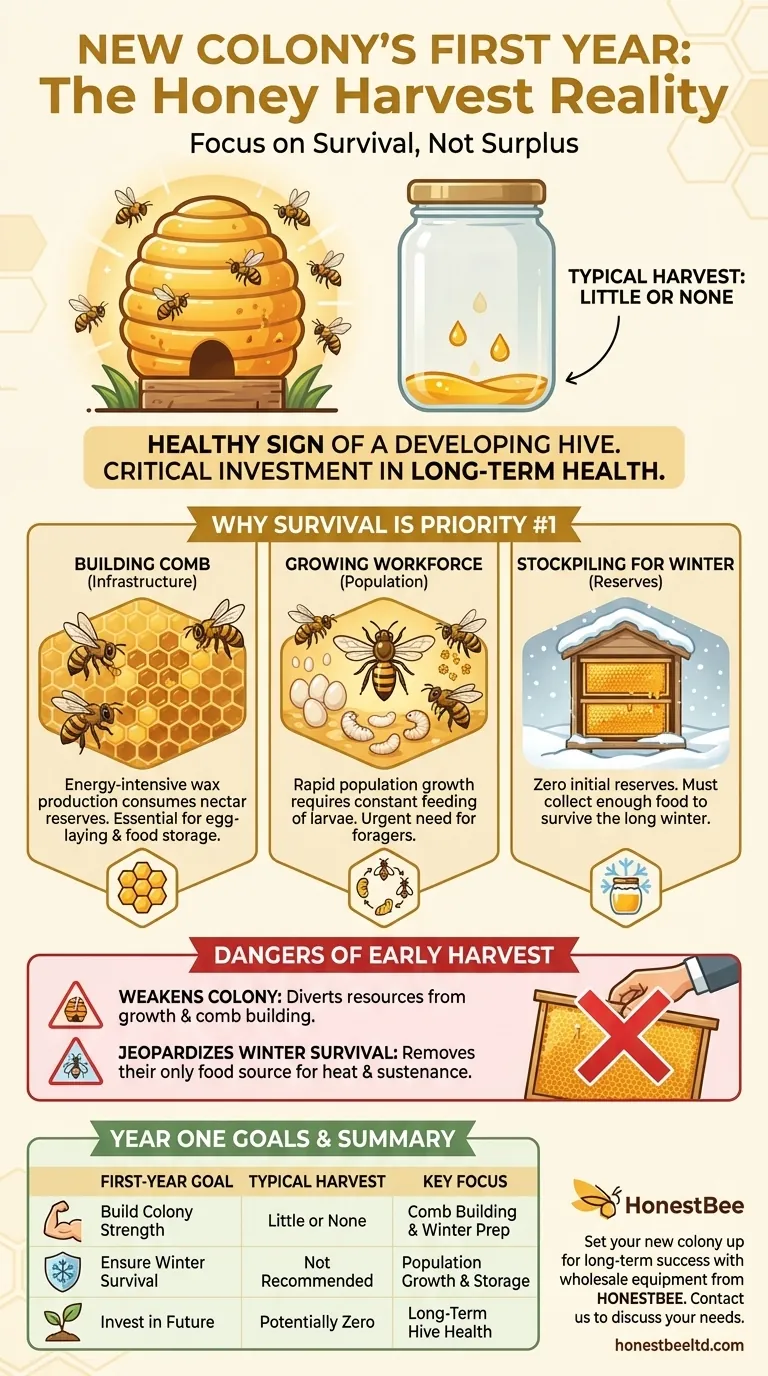In most cases, the typical honey harvest from a new colony in its first year will be little or nothing. This is a completely normal and healthy sign for a developing hive. New beekeepers should view the first year not as a period for harvest, but as a critical investment in the long-term health and productivity of the colony.
Your primary goal in the first year is not to take honey, but to ensure the colony builds the strength and resources it needs to survive its first winter. A powerful, well-established colony in year one is the foundation for abundant harvests in the years that follow.

Why a First-Year Colony Prioritizes Survival, Not Surplus
A new colony is a startup company operating on a tight budget. Every resource must be allocated to essential infrastructure and workforce development before it can even think about generating a "profit" in the form of surplus honey for you.
The Critical Task of Building Comb
A new hive is an empty house. The bees must produce immense quantities of beeswax to draw out the comb on every frame. This comb is the essential structure where the queen lays eggs and the colony stores all its food.
Producing wax is an incredibly energy-intensive process, consuming significant amounts of nectar that would otherwise be converted into honey.
The Race to Build a Workforce
A new colony begins with a relatively small population. The queen’s most urgent job is to lay thousands of eggs to rapidly build a large workforce of forager bees.
This rapid population growth requires a constant supply of pollen and nectar to feed the developing larvae, consuming resources as quickly as they are brought in.
Stockpiling for the First Winter
Unlike an established colony, a new hive has zero reserves. Its primary objective throughout the spring and summer is to collect and store enough honey and pollen to survive the long, cold winter when no food is available.
The colony will not produce a surplus until its own survival needs are fully met, which often takes the entire first season.
The Dangers of Harvesting Too Early
Taking honey from a first-year colony is not just disappointing; it can be actively detrimental to the bees and jeopardize the survival of the entire hive.
Weakening the Colony
Removing the colony's primary energy source forces them to divert resources away from crucial tasks like raising new bees and building comb. This can stunt their development and leave them vulnerable.
Jeopardizing Winter Survival
A colony without sufficient honey stores is very unlikely to survive its first winter. The honey you harvest is their only food source to generate heat and sustain themselves through the cold months.
Removing their winter pantry can directly lead to the loss of the colony.
Setting Your Goal for the First Year
Success in the first year should be measured by the colony's health and strength, not by the amount of honey in a jar.
- If your primary focus is a healthy, sustainable apiary: Leave all the honey for the bees. Your investment of patience will be rewarded with a strong colony ready for production in year two.
- If your primary focus is long-term honey production: A robust colony that survives its first winter is the single greatest asset for future harvests. Do not compromise its chances by taking honey prematurely.
Your patience in the first year is the most important ingredient for a thriving and productive hive.
Summary Table:
| First-Year Goal | Typical Honey Harvest | Key Focus |
|---|---|---|
| Build Colony Strength | Little or None | Comb Building & Winter Preparation |
| Ensure Winter Survival | Not Recommended | Population Growth & Resource Storage |
| Invest in Future Harvests | Potentially Zero | Long-Term Hive Health |
Set your new colony up for long-term success with the right equipment from HONESTBEE. We supply commercial apiaries and beekeeping equipment distributors with the durable, wholesale-focused supplies needed to build strong hives. Let our expertise support your beekeeping journey—contact our team today to discuss your needs!
Visual Guide

Related Products
- HONESTBEE 72 Frame Industrial Electric Honey Extractor for Beekeeping
- 2 Frame Stainless Steel Manual Honey Spinner Extractor for Beekeeping
- HONESTBEE 3-Frame Manual Acrylic Honey Extractor
- electric honey extractor honey centrifuge 3 frame honey extractor stainless steel honey frame extractor
- Stainless Steel 3 Frame Manual Honey Extractor Spinner for Bee Honey Extraction
People Also Ask
- What should a beekeeper do after extracting honey from supers? A Guide to Harvest Management
- How is honey harvested from Langstroth hives? A Guide to Efficient, Comb-Preserving Extraction
- What are the advantages of automated honey extractors in terms of time efficiency? Boost Your Harvest Speed
- What are the advantages of automatic honey extractors? Scale Your Apiary with Unmatched Efficiency
- Can a manual extractor be upgraded to an electric one? Save Labor & Boost Efficiency



















